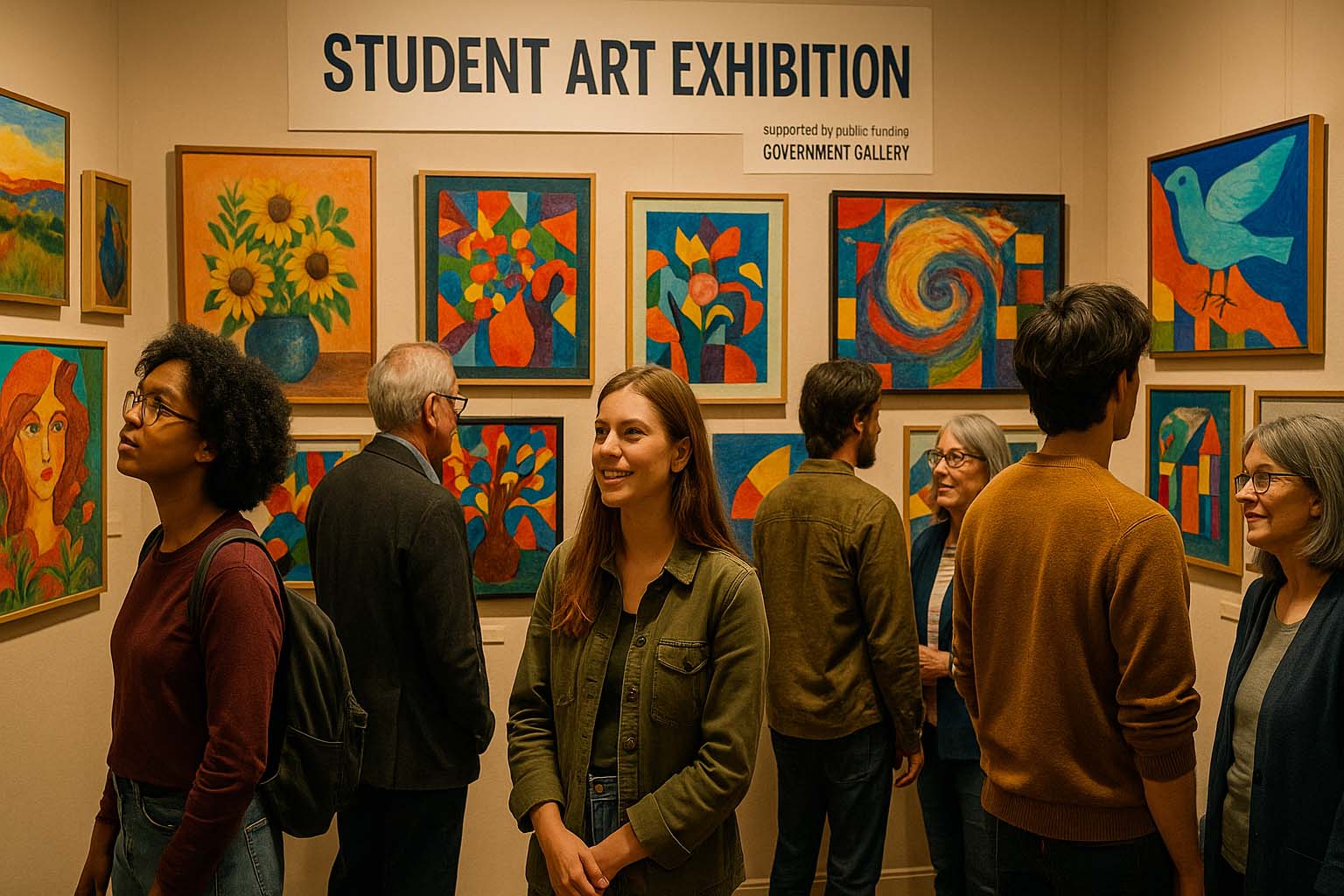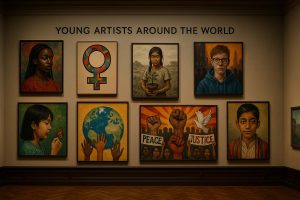
Student Art Featured in Government-Supported Exhibitions
Art is more than just sketches or brushstrokes. It’s a form of communication, a reflection of identity, and a bridge between different cultures. Around the world, student artists are receiving growing recognition as government-funded exhibitions open up new doors for creativity and cultural inclusion. These exhibitions provide space for young voices to be seen and heard through their artwork.
Expanding Global Opportunities for Young Artists
In countries where education and culture are strongly supported, such as Canada, Finland, Australia, and Germany, student art exhibits are becoming more frequent and accessible. These shows welcome various forms of art—sculpture, painting, digital pieces, even installations. With public funding, students and families are not burdened by expensive participation costs. Cultural councils, art centers, and education departments often join forces to ensure equal opportunities for all students, regardless of background.
In Finland, schools contribute student works to Helsinki’s annual art week, while in Canada, programs by the Ontario Arts Council focus on reaching youth in underserved communities. This approach allows more diverse stories and perspectives to emerge, enriching both artists and audiences.
Why Government Support Matters
Not every school has the resources to host exhibits or offer complete art programs. Public backing bridges these gaps, bringing student art to wider audiences—including those in remote or rural areas. These initiatives also validate the voices of young people. They send a message: their thoughts, feelings, and creative views are meaningful and deserve attention.
Berlin’s Youth Arts Showcase in Germany is a good example. Each year, students are invited to interpret a social or environmental theme. Their selected work is displayed in galleries and sometimes also in virtual shows that attract a broader global audience.
Stories That Inspire
Amara, a 17-year-old in Melbourne, began drawing casually during her online classes. With the encouragement of a local arts council, she submitted a piece to a regional exhibition. Her art was selected, catching the eye of an advisor from a national art institute. This led to a scholarship that changed the course of her life.
In Canada, Malik, age 15, the child of refugee parents, joined an after-school art program to connect with his peers. One of his paintings was chosen for an exhibit focused on starting fresh in a new place. His work stood out, touching viewers with its honesty and warmth. Later, his art was featured on posters for community support programs for refugees.
Diverse Mediums and Student Expression
These exhibitions don’t limit students to a single style. Instead, they encourage exploration. Many projects are made from recycled materials, digital tools, or involve community collaborations. This freedom supports personal expression and new approaches to storytelling through art.
In South Korea, the National Student Art Exhibition includes a section focused on digital formats—perfect for those interested in design, animation, and visual media. In New Zealand, schools collaborate with indigenous groups, blending traditional arts with contemporary styles. These partnerships create respectful, meaningful art pieces that reflect both heritage and innovation.
The Role of Teachers and Families
None of this happens without support from educators. Teachers guide students in both skill and discipline. They often go beyond regular classroom hours to mentor and prepare young artists for exhibitions. Many help students frame their work, write artist statements, and submit entries.
Families also contribute by providing encouragement, transportation, and sharing their children’s work with others. Even a simple compliment or a social media post can remind a young artist that their work matters.
Benefits for the Students
Participating in public exhibitions gives students more than just pride in their finished artwork. The experience leaves lasting effects:
– **Increased self-confidence** – Knowing their work will be seen boosts belief in their own abilities.
– **Wider understanding** – Viewing and discussing art by peers broadens their appreciation of style and meaning.
– **Professional interest** – Exhibits may spark interest in pursuing art or design as a career.
– **Community bonds** – Through shared events, they connect with fellow artists, educators, and patrons.
These benefits go beyond school grades. They help shape identity and develop a sense of purpose.
Reaching More Students Through Technology
Technology has played a key role in expanding the reach of student art. Virtual galleries are now common, allowing artists to upload work and viewers to explore collections from anywhere. These platforms are especially useful for students who can’t travel or live in areas without access to major art institutions.
During global health crises, many countries turned to online showcases. What started as a response to restrictions has now become a regular part of arts programming. Students take part in interactive sessions, watch recorded gallery walks, and even participate in artist Q&A sessions across time zones.
Plans for Future Growth
With continued success, programs are beginning to grow. Some regions are developing cross-border exchanges. Art created by students in one country is shown in another to spark cultural awareness. These exchange exhibitions allow young people to connect with peers from different parts of the world in meaningful ways.
Mentorship programs are also growing. Former student participants return as guides, helping new artists develop their skills and prepare for public viewing. This system builds community and keeps knowledge circulating among generations of young creators.
Some groups are also working to make exhibits more accessible. Labels are translated into several languages, and some paintings are recreated in textured forms so people with visual impairments can also experience them. These thoughtful additions help make exhibitions truly inclusive.
Art as a Mirror of Hope
Each piece of student art tells a story—not only about color or shape, but about how young people feel, what they see, and how they make sense of their world. These stories are not just personal. They often speak to shared struggles, resilience, dreams, and calls for change. Exhibits supported by public funds bring those messages to light.
They also help establish a place for the arts in school curricula and national conversations. As students participate in such programs, they grow both as artists and as individuals with voices worth hearing.
The Visible Impact
The effect of this global movement is clear. As schools, families, and institutions join together, a thriving and more inclusive art scene is emerging. Exhibitions allow students to stand tall in front of their communities. They are celebrated not only for their talent but also for their ideas.
These opportunities help young artists feel supported. That sense of validation pushes them to continue, to refine their craft, and to share what they see and feel with others. When their work is welcomed and respected, they are encouraged to stay curious, keep growing, and contribute to a wider creative world.
Building a Creative Future
Programs that support youth artists are shaping more than just individual futures. They strengthen cultural understanding, connect communities, and encourage freedom of thought. Through painting, sculpture, digital art, and many other forms, students express what textbooks sometimes cannot.
As these programs expand and evolve, the goal remains the same: to keep creativity alive and accessible. Student exhibitions offer proof that art belongs to everyone—and that young people have something powerful to say.
Their canvas is the world, and their voices are already leaving a mark.

